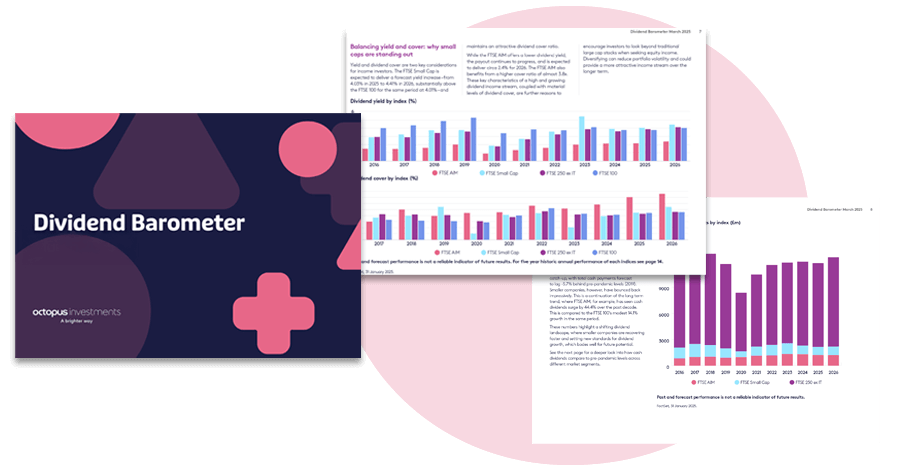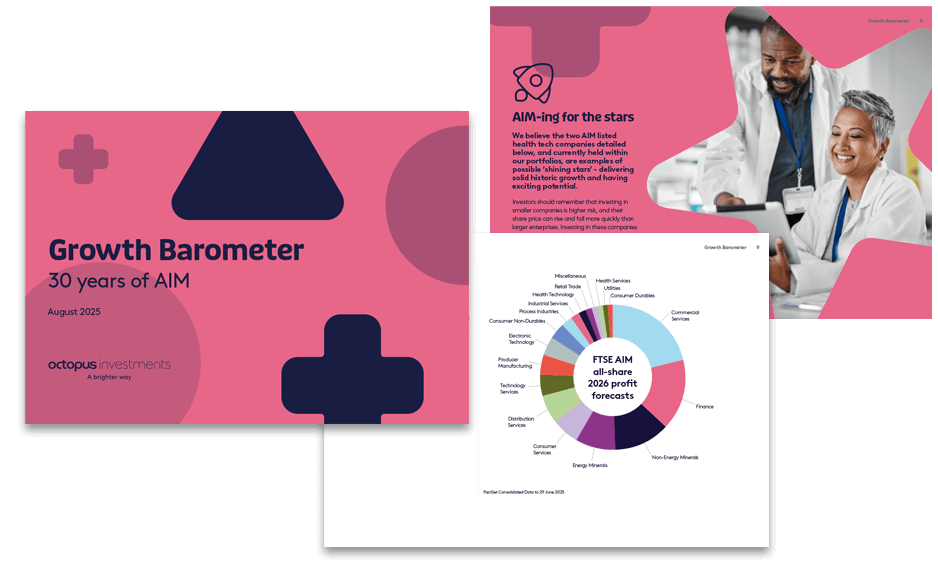WhitepaperInheritance tax
Discretionary trusts
Last updated: 5 December 2024
What is a discretionary trust?
A discretionary trust grants trustees the authority to determine the distribution of trust assets, both capital and income, to beneficiaries, providing flexibility and protection of assets in changing circumstances. Trustees have the discretion to decide the amount and timing of distributions, and they can also select which beneficiaries will benefit.
Why use a discretionary trust?
Why use a discretionary trust?
A discretionary trust can be an effective way to pass assets down from one generation to the next with a degree of flexibility and control.
A discretionary trust can be set up according to a person’s wishes and provide for a group of beneficiaries tax-efficiently, because assets in the trust and any investment growth are outside of the estate (provided the person who set up the trust survives for more than seven years).
However, when setting up a discretionary trust, inheritance tax (IHT) can be payable at the outset, every 10 years (known as periodic charges), or in the event of trust assets being paid out to beneficiaries.
How does a discretionary trust work?
How does a discretionary trust work?
The key components of a discretionary trust are:
- The trust settlor – The person who puts assets into a trust. Once the settlor has put their assets into trust they no longer own those assets. They cannot access that money or spend it on themselves. The settlor chooses the trustees and the beneficiaries.
- The trustees – The trustees take legal ownership of the trust fund from the settlor. They look after the trust fund and make arrangements for payments to beneficiaries. They must always act in the best interests of the beneficiaries and can only do what is allowed in the trust deed.
- The beneficiaries – The people who can receive payment or assets from the trust fund (i.e. benefit from it) are called the beneficiaries. The people who may be a beneficiary are listed in the trust deed.
- Deed of trust – This is the legal document that governs what the trust and trustees should do.
Ask Octopus
Do you have a question about inheritance tax and estate planning?
Use our free helpdesk to Ask Octopus

Inheritance tax entry charges when settling assets into a discretionary trust
Inheritance tax entry charges when settling assets into a discretionary trust
When assets are transferred into trust in-life, and the value of the transfer exceeds the settlors nil rate band (NRB), currently £325,000, and any annual exempt allowance (currently £3,000), then a chargeable lifetime transfer (CLT) occurs at up to 20%.
Where a settlor chooses to pay the entry charge, the CLT should be grossed up (i.e. the total value transferred is that of the legacy and the tax on the legacy). This is because the IHT is based on the reduction to the settlor’s estate. This means an effective rate of 25% is paid rather than 20%.
Transfers into a discretionary trust on death are not CLTs. This is because on death, any assets that may have been subject to inheritance tax would have been liable for taxation on the death estate.
Settling assets into a discretionary trust and the inheritance tax 7 year rule
Settling assets into a discretionary trust and the 7 year inheritance tax rule
Where an individual dies within seven years of transferring assets into a discretionary trust, inheritance tax at up to 40% should be due by the death estate on the transfer. Any inheritance tax already paid in respect of the transfer (arising from being a CLT) can be deducted from the inheritance tax due on death in relation to the transfer.
Additionally, taper relief may be available to further reduce the inheritance tax rate, depending on the length of time between the assets being settled into the trust and death of the trust settlor. The rate reduces the further away the assets were settled from death. However, where the death is within three years of a gift, taper relief should not be available.
Any other failed PET (i.e. PET made seven years before death) or CLT that was made seven years before the CLT in question, should reduce the NRB available when calculating the IHT due on the CLT in question. Explore our 14-year rule whitepaper which shows an example of this.
Additionally, there is a separate calculation for the death estate which also includes any CLT or PET made within seven years. Explore our chargeable lifetime transfer and potentially exempt transfer whitepapers.
Where a Business Relief asset was transferred into trust in life, as above, there should be no CLT at time of gift. There should also be no further IHT on death even if that happened within seven years of a gift, provided the trust holds the Business Relief asset at time of the settlor’s death.
Explore our helpful guide on Business Relief and discretionary trusts.
Discretionary trusts and inheritance tax 10 year periodic charges
Discretionary trusts and inheritance tax 10 year periodic charges
Inheritance tax charged up to 6% is due on each 10 year anniversary of the creation of a trust, on the value of trust assets over the trusts nil rate band. Trusts currently have a nil rate band of £325,000, like individuals.
Steps
- Find value of trust assets at 10 year charge. Add any value of any related settlements (see related settlement section below).
- Adjust nil rate band of trust: Amend the nil rate band of £325,000 reduced for CLT made seven years prior to the start of trust, and/or PETs made seven years before start of trust that become chargeable on death of settlor and capital paid out to beneficiaries in the last 10 years.
- Calculate notional tax: Tax the remaining balance at the lifetime rate of 20%
- Calculate effective and actual rate: Express tax at step 3 as percentage of the transfer and multiply by 30% (the initial rate)
- Apply that actual rate to the value of trust assets at 10 year periodic charge. If any of the trust property was added in and therefore not in the trust for a full 10 years, reduce the rate in proportion to time that the asset was in the trust in the 10 year cycle. Do this by applying the fraction n/40, with n being the number of complete quarters at the point of exit. This is expressed as a fraction of total quarters in first 10 years (i.e. 40).
Discretionary trusts and inheritance tax exit charges before 10 year periodic charge
Discretionary trusts and inheritance tax exit charges before 10 year periodic charges
Where assets leave the trust and are treated as a capital exit then an inheritance tax exit charge may arise and may due at up to 6%, where the transfer of value is over the nil rate band.
The inheritance tax rate depends on if the exit was before or after the 10 year charge.
For exits before the first 10 year charge, the charge is based on the value of the trust at the outset, any failed PETs or CLTs made by the settlor, and the length of time before the 10 year charge.
Steps
- Find initial value of the trust: Take the value transferred into trust. Minus any lifetime tax paid by the trustees. Add any further assets added to the trust before the 10 year anniversary or related settlements or same day additions.
- Adjust nil rate band of trust: Amend the nil rate band of £325,000 reduced for CLT made seven years prior to the start of trust and/or PETs made seven years before start of trust that become chargeable on death of settlor.
- Calculate notional tax: Tax the remaining balance at the lifetime rate of 20%.
- Calculate effective rate: Express tax at step three as percentage of the transfer and multiply by 30% (the initial rate).
- Calculate actual rate: Reduce the rate in proportion to the time that has already passed in the 10 year cycle. Do this by applying the fraction n/40, with n being the number of complete quarters at point of exit. This is expressed as a fraction of total quarters in first 10 years (i.e. 40).
- Apply actual rate to exit value. (Gross up the rate where the trustees pay the exit charge).
Discretionary trusts and inheritance tax exit charges after 10 year periodic charge
Discretionary trusts and inheritance tax exit charges after 10 year periodic charges
As above, the IHT charge applicable on capital payments out of trusts to beneficiaries depends on if the exit was before or after the 10 year anniversary of the trust.
For exits after the first 10 year period, the rate of inheritance tax and is based on the rate paid on the last periodic 10 year charge (if applicable) based on the NRB at exit. This rate will be calculated pro rata across the current 10 year period from the date of the last 10
year charge to the date of the capital distribution. This means that, for example, if trustees choose to exit the investment five years short of its next 10 year anniversary, the rate applicable will be half of that which was charged at the last 10 year point.
Steps
- Take the rate at the last 10 year charge.
- Adjust for changes in the trust: If there have been any additions to the trust or related settlement additions, recalculate the rate of 10 year charge. If none, skip to step three.
- Calculate actual rate: Reduce the rate in proportion to time that has already passed in the 10 year cycle (for example if halfway through, then reduce the initial rate by half). Do this by applying the fraction n/40, with n being the number of complete quarters at point of exit. This is expressed as a fraction of total quarters in first 10 years (i.e. 40).
- Apply actual rate to exit amount. (Gross up rate where the trustees pay the exit charge.)
Discretionary trusts and distributions to beneficiaries, capital or income?
Discretionary trusts and distributions to beneficiaries: capital or income?
Advice will need to be sought to determine if the payment to a beneficiary is deemed to be out of income (and therefore subject to income tax in the beneficiaries’ hands) or deemed a payment out of capital (and therefore subject to an inheritance tax exit charge from the trust).
It’s important to understand that the source of the payment from a discretionary trust is not what determines the income or capital nature, rather the focus is the nature of payment to the beneficiaries.
HMRC guidance sets out some points to consider on this, however this would be reviewed on a case-by-case basis.
Payments treated as capital
The inheritance tax rate depends on if the exit was before or after the 10 year charge. As set out above.
Payments treated as income
The payment may be deemed to be paid net of the discretionary trust tax rate at 45%, an effective tax credit. Beneficiaries are then taxed on the grossed-up amount, and the deemed tax credit could be allowed as a deduction from their tax.
If the trustees don’t have enough tax they previously paid, that covers the tax credit the beneficiary received, then the Trustees need to pay the excess tax, to effectively match the tax credit the beneficiary has received.
Related settlements and same day additions
Related settlements and same day additions
Two trusts are related if the settlor is the same in each case, and they commenced on the same day. See our helpful paper which includes Rsyaffe trust planning.
Same day additions rules supplement the related settlement trusts rules. Same day additions are subsequent additions to trust made on the same day.
Income tax and discretionary trusts
Income tax and discretionary trusts
The first £500 of income received from assets in a discretionary trust is not taxed. Any income above this is taxed at the trust rate, currently 39.35% for dividend income and 45% for all other income.
Capital gains tax and discretionary trusts
Capital Gains Tax and discretionary trusts
Discretionary trusts have a capital gains annual exemption of £1,500, which is half that of an individual’s exemption of £3,000.
Capital gains tax is charged at either 20% for non-residential assets or 24% for residential property for sales before 30 October 2024 and 24% for all assets for sales on or after 30 October 2024.
If a trust’s settlor has set up more than one trust (settlement), the annual exemption will be divided equally between the number of trusts, up to a maximum of five. If there are five or more, the tax-free allowance would remain the same for each subsequent trust.
Tax legislation, rates and allowances are correct at time of publishing for the tax year 6 April 2025 – 5 April 2026.
From 6 April 2026, a 100% IHT relief will continue for the first £1 million of combined agricultural and unquoted Business Relief qualifying property (e.g. sole traders, partnerships, unquoted companies). Amounts over the £1 million will attract 50% IHT relief. Business Relief qualifying companies listed on the Alternative Investment Market (AIM), will attract 50% IHT relief irrespective of the investment amount.
Related resources
Related resources
Chargeable lifetime transfers
A Chargeable Lifetime Transfer (CLT) is a gift made during an individual's lifetime that is immediately subject to Inheritance Tax (IHT).
BR and discretionary trusts
This 30-minute CPD-qualifying session explores BPR-qualifying assets and how the 10-year periodic charge applies to discretionary trusts.
IHT Toolkit
You can educate and nurture clients with these resources when having conversations about estate planning using this handy Toolkit.





